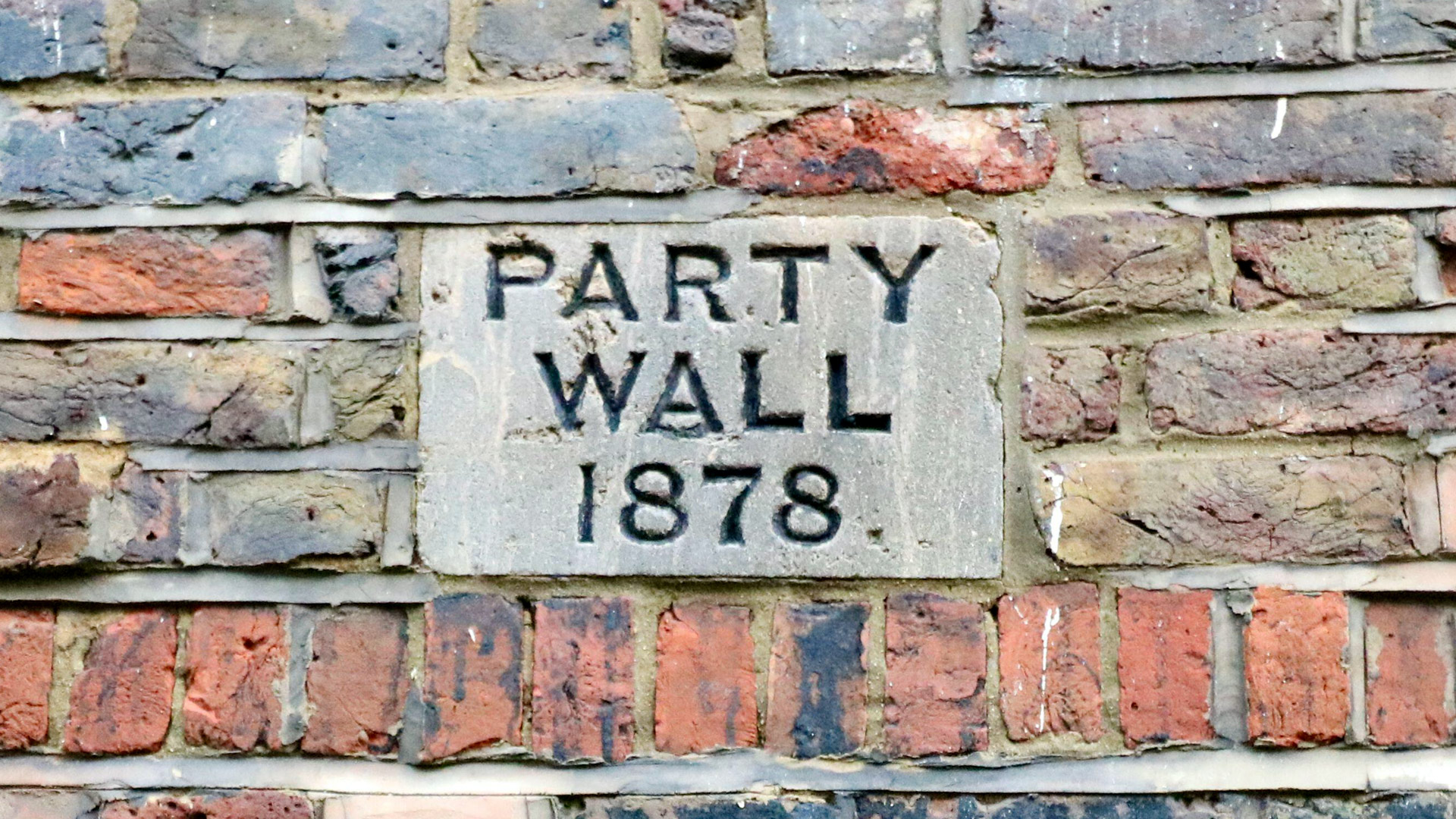
Thisbe, by John William Waterhouse, 1909
It’s fair to say that the Pyramus and Thisbe Society has a passion for party walls. The learned society, now in its 50th year, is the place to go if you need to know about the Party Wall etc Act 1996.
This may sound like a very specialised subject to focus on, but most homes that aren’t detached houses have a party wall somewhere. The Act also covers other structures that separate two homes, such as the ceiling and floor between two apartments or party fence walls – which explains the ‘etc’ in the name of the Act.
If your neighbour plans to undertake significant work to their property, they must serve a notice to the adjoining owners informing them of that work. And should neighbourly relations turn sour, the Act provides a dispute resolution process.
“It is a statute that supplants some of the UK’s common law,” says Jack Norton MRICS, secretary of the Society’s London branch. “It creates a statutory process that enables property owners to develop, while protecting their neighbours.
“It allows construction-related disputes to be pragmatically resolved by construction professionals and, for the vast majority of the time, keeps neighbours away from courts and avoids excessive costs and grief. Given the number of construction projects completed in England and Wales to which the Act applies, very few appeals or cases reach the courts.”
And what of the society’s cultured name, where did that come from? As fans of Roman poet Ovid’s Metamorphoses will tell you, Pyramus and Thisbe were the original star-crossed lovers long before Shakespeare wrote Romeo and Juliet. The pair were forced to communicate their love for each other through a small opening in the wall that separated their neighbouring homes, because their feuding families had forbidden them from marrying each other.
Little did they know they would become symbolic representatives of party wall law many hundreds of years later.

Old brick wall indicating Party Wall 1878. Image: Jane Tansi / Alamy Stock Photo
From club to society
Most of the Pyramus and Thisbe Society’s 1,000 or so members are building surveyors, along with solicitors, barristers, structural engineers and architects. Hannah Boyd MRICS, is the chair of the Society’s London branch.
“It was originally established as a club back in 1974, led by John Anstey, who invited a small group of party wall professionals to share opinions and knowledge,” says Boyd. “This was following widespread misreporting of the case of Gyle-Thompson v Wallstreet Properties Ltd 1974.” (This case was settled in the High Court when an injunction was granted against Wallstreet Properties, relating to demolition works which required the reduction in height of a party wall.)
When it first began, the members would share knowledge and expertise of older building Acts (1930 and 1939 in particular) that concerned party walls, and eventually played an important role in the creation of the current 1996 Act. The Party Wall Bill was sponsored through parliament by John Lytton FRICS, a past chairman of the club.
“The Pyramus and Thisbe Club continued to grow and expanded nationwide in 1997, after the introduction of the Party Wall etc Act 1996,” says Boyd. “The move to become a ‘learned society’ happened in 2020.”
Boyd explains that their remit as a learned society is “to be a not-for-profit organisation dedicated to the pursuit of excellence and education in a specialist profession. That is our vision, and we expect our members to engage with each other, share their knowledge and experience and provide advice to other members and the general public.”
Continued professional development (CPD) plays an important part in this – once someone is a full member they are expected to complete five hours of CPD each year, three of which should be provided by the Pyramus and Thisbe Society. (The initial route to join is as an associate member, becoming a full member after two years.)
“This year, the London branch has 880 places for members at live CPD events, and today I am off to Birmingham for our National Conference,” says Norton. “In addition to formal lectures, the Society has always encouraged social occasions, which provide a valuable opportunity to network, meet, and discuss party wall topics with other professionals.”
The Pyramus and Thisbe Society also collaborates with other organisations in the built environment, including RICS. “Some of our members are involved in producing the RICS guidance on party walls,” says Boyd. “And we would like to work with bodies like the Royal Institute of British Architects (RIBA), Chartered Association of Building Engineers (CABE) and Institution of Civil Engineers (ICE). It is something we are looking to develop more as the Society expands.”
“It keeps neighbours away from courts and avoids excessive costs and grief” Jack Norton MRICS, Pyramus and Thisbe Society
Everybody needs good neighbours
So, does the Act ensure we are all better neighbours? “It allows building owners to carry out construction work while taking into account the interests of the neighbours,” says Boyd. “Without it, it would not be possible to carry out any work to a party wall (a jointly owned structure) or do any excavation work within a certain distance of adjoining properties. It also provides legal rights of access onto neighbouring land to carry out certain elements of work.”
It's an integral part of Boyd’s full-time work as director of neighbourly matters at Murray Birrell Chartered Surveyors. “The bulk of my workload is dealing with party wall matters. Most of the time it is pleasant and amicable, but fundamentally it is a dispute resolution process, so inevitably there are some challenges. Residential projects can sometimes become emotionally driven and I try my best to empathise and manage expectations.”
For Norton too, it is a regular part of his work as director, surveyor and mediator at Schofield Surveyors. “Most people usually need an explanation of a certain part of the Act or need to understand how the Act applies to their situation.”
In the classical poem, Pyramus and Thisbe were too busy whispering sweet nothings to each other through a crack in the wall to be concerned by the appearance of the crack itself – proving they weren’t surveyors. But if one of their already-feuding families had wanted to carry out significant renovation to their property, the expert knowledge of a party wall specialist would have proved very useful.


